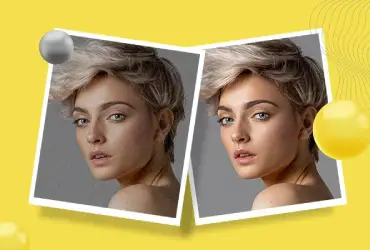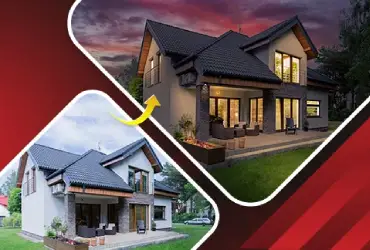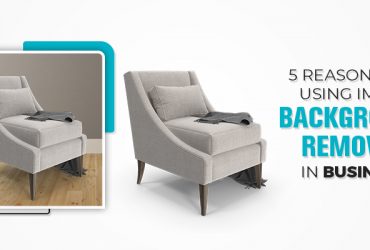Useful Motion Graphics Techniques for Video Editors - 2025
Whether it is 2D or 3D, motion graphic animations bring visions to life. They create an immersive experience for the viewers, captivating them emotionally. Besides, videos and animations are the most shareable content at present times; be it Instagram Reels, YouTube Shorts, or TikToks, animation is an effective awareness tool.
It can be well understood that character animations are definitely crowd-pullers owing to the immersive experience they create. But have you ever wondered how do motion graphic artists develop stunning artwork that makes their content so dynamic? It all lies in some of the best motion graphics techniques.

So, if you are interested in knowing more about these useful techniques to hone your animation production workflow, stick with us until the end. This blog will discuss the best techniques all animators must have in their arsenal. Let’s begin!
How can video editors use captivating motion graphics techniques to make videos more engaging?
Motion graphics has always been a craze among movie producers, film directors, art developers, animators, and so on. They are different from the standard 2D animation by virtue of the stunning typography animations. This means texts are used as narrative tools in 2D motion graphics in the form of abstract animation.
It is definitely a tricky skill to acquire, given the fact that the animator must possess a high sense of artistry and graphic design expertise. Two of the main skills required are compositing skills and basic motion designing. As well as knowing specific animation effects. As online video trends keep on evolving, motion graphic artists need to find better ways of utilizing them for several communication purposes. There are tons of techniques to leverage for advanced compositing, VFX, better titles, cleanups, etc.
Motion graphics in video editing are excellent for creating a visual narrative on television or for digital purposes, mainly for stylistic purposes involving relevant audio and background scores. The videos can be hand-drawn whiteboard animation, cartoons, CGI, anime, or clay motion. The main game-changer is the “motion”, creating a seamless transition between multiple shots. Besides using for stylistic purposes motion design also adds context to the narrative or the video storyline.
Several global brands integrate motion design into their logo sequences, which conveys the brand values, the product, along with their USP. Often, through motion logo design, brand owners can also explain the problem they are solving. Even user interface animations in websites, like icons, buttons, web pages, navigation, etc., also incorporate motion graphic techniques.
Another best use is for creating CVs or resumes. Using motion transitions and typography animation, one can animate presentations, their success stories, bar charts, graphs, and more. This makes their resumes more engaging and professional.
11 handy motion graphics techniques ideal for new-age video editors
The usage of motion design animation has been widespread in recent times ever since films, commercials, and online communication became more of a standard. Driving customer engagement in digital marketing campaigns is a challenge; motion graphic animations such as kinetic typography are suitable for all campaigns and social media ads.
However, for any principle of motion animation to work and create an impact, techniques are most vital. Different techniques are used to create character animations in various styles. Let’s learn a few of them that can make your projects reflect the tone of your brand and make them eye-catching.
Compositing
Compositing in motion graphics is the software-generated process of uniting digital components. This creates a sense of visual connection or unity in the viewers’ eyes. The compositing technique includes rotoscoping, green/blue screen capture, CGI, matting, multiple exposures, frontal/rear projection, and so on.
The compositing technique is best seen in news broadcasts wherein the reporter is positioned against a green screen, and the weather details or map is displayed behind. In short, this motion graphic technique is done when an environment, otherwise impossible to create, is required. This process can be done in either of the two stages: the pre-production stage or the video post-processing stage.
Merge 2D & 3D elements
Motion design animations that include both 2D and 3D elements are not only engaging, but they also offer multiple benefits. Product-oriented brands such as furniture, electronic appliances, cosmetics, healthcare, and fitness gadget brands can effectively promote their products.
With 3D components in motion animation, it becomes easier for potential buyers to examine the product closely, check each corner and facet of it, and then make an informed purchase decision. The process includes creating and animating the models or characters in 2D and then putting them within a 3D-designed environment facing the camera. Doodle videos and certain TVCs utilize both approaches by blending 3D and 2D.
Kinetic typography
Kinetic typography is a dynamic motion animation technique, also called “moving text” or “motion typography”. This technique focuses entirely on grabbing the audience’s attention with creatively moving texts. This technique is best for merging motion with texts to convey complex ideas and narratives. It displays the texts in such an artistic way that evokes emotions in the viewers, as well as entertain them.
TV commercials, apps, music videos, websites - we can see this dynamic animation technique in all these aspects.
Blending modes
One of the best motion graphics software for this technique is Adobe, which offers After Effects. After Effects helps animators create abstract color combinations in videos. This technique is best known for its creative, as well as utility purposes. The animator can control how different layers and elements blend; means how the brightness, color, and transparency between multiple layers impact the layers beneath.
Professional motion designers can also add subtle color schemes to the final edited video, creating a wide range of visual effects.
Video transitions
This is the best part of motion graphics. Motion design animations are primarily known for seamless transitions between multiple frames throughout the animation. This technique is the main trait that gives video editors a free hand to create complex cuts. Such as dissolve, hard cut, match cut, infinite zoom, blur, wipes, cutaway, mask transition, dynamic morph, cut on action, and more.
Every video editing professional, film-maker, and motion animator should know these transition techniques done in the post-production phase. Final Cut Pro (Apple) and Premiere Pro (Adobe) are the best motion graphics tools for video editing and applying appropriate transitions from one shot to the other.
Masking
Masking is a technique that is related to the compositing technique (discussed above) in a way to isolate certain components in the frames. Editors can cut out a specific area from a shot and work only on that area instead of the entire animation.
This technique is best used for motion movements, such as throwing something forward. Without moving the rest of the area in the frame, animators can only integrate a throwing motion in the main character’s arm. This technique is also helpful in eliminating unwanted elements, merging more than one layer, and creating flawless in-between frame transitions.
-
Warping
The warping motion is one of the most used and adopted motion video techniques used to create fascinating shapes and animations. It is a smooth distortion of an image that can be blurring, stretching, or even more complex movements. With the warping technique and effect, the curves of any graphics or elements in a video can be altered or distorted.
Warping can be considered a geometric technique that transforms an element into something totally new. Several professional filmmakers and video editors leverage the warping motion technique and transform the perception of reality in the video. The technique opens new possibilities for video creators to create mind-bending motion sequences.
-
Parallax scrolling
This is a trend that’s mostly seen in mobile apps, websites and web/app development projects. The parallax effect uses different images and graphics that have different motions. This motion graphic technique adds an illusion of dimension and depth to the videos.
This visual effect and illusion is created as the background moves slower than the foreground, giving the viewers a sense of perception. Viewers can get the best viewing experience with this dynamic motion technique. There are several open-source 2D animation software for these scroll-triggered effects.
-
Morphing
The morphing technique is used in 2D and 3D motion graphics alike for the best results. The technique is essentially used to seamlessly change an image or shape into another shape or image. The more the morphing is seamless, the higher the quality of the animation. Morphing is also used for 3D animation and 3D modeling purposes.
Morph animation technique saw widespread adoption in the late 20th century with movies such as Terminator 2, Transformers, Flight of the Navigator, Willow, etc. There are primarily four main types of morphing techniques, namely:
- Morphing at max speed
- Direct morphing
- 50/50
- 3D morphing
-
Animated infographics
Infographics are a visual way of displaying complex data, information, or knowledge clearly for quick comprehension. When you animate the infographics, you go a step further and you can highlight key data points, explain complex processes, and make the information more interesting.
-
Glow effect
The last entry in our top ten motion graphic techniques is glow animation, which is best for music videos and other YouTube typography videos. The glow effect technique is best for enhancing boring title cards, intros, and outros, giving them a neon glow effect. The technique, when used in the right way, not just captivates the audience, but also makes the entire animation stand out. It gives the illusion of an animated light trail behind or in front of a layer.
The technique is applied during the post-processing stage, and a blurred version of a video element is added over the original copy. The final outcome contains illuminated moving objects and random shimmering texts.
Over to you now!
Hope the readers have got a fair understanding of the various techniques involved in motion graphics and motion design animations. If this insightful article did the trick, then get started with your workflow today. There are several online tools available, ranging from free to paid, with professional-grade features.
If you are a beginner, learn the basics of motion art and develop the technical skills required. Learn the basics of industry-standard tools like After Effects, Final Cut Pro, Premiere Pro, etc. Also, be accustomed to the growing motion video trends, and resources for better inspiration. Soon, you shall see yourself as an accomplished motion designer.
Alternatively, you may get help from and collaborate with the experts on the job. Various external agencies are there who provide top-notch video editing services at competitive prices. Team up with them and get the best motion animation to impress your clients.



